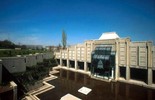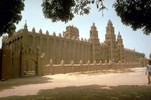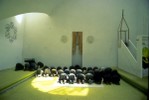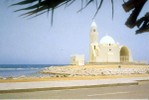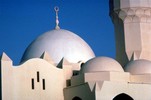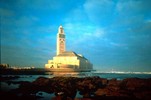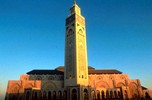Concepts
Historical Background: The last two decades witnessed the resurgence of a historicist movement in architecture in the Islamic world that was influenced by contemporary architectural thinking in the West and fervent searches for cultural identities in the recently formed nation-states. The manifestations of this movement range from the romantic approach to historical precedents pioneered by the late Egyptian architect Hasan Fathy, to the free, and often arbitrary, usage of forms detached from their historical and geographic contexts, as exemplified by the high-quality works of the Egyptian 'Abd al-Wahid al-Wakil and the Iraqi Basil al-Bayati. They move on to include the rational, abstracted, and at times minimalist projects of architects trained in the modern tradition who applied logical and deductive methods to their dealing with history, and to include the scientific historicism whose proponents classify, analyze, and re-interpret historical examples to justify their uses.
Monuments
National Assembly Mosque, Ankara, Turkey
(1987-89). A modernist place of worship for a secularist government, this mosque was designed by the Cinici group. Constructed in exposed concrete, the mosque displays innovative abstractions of all the traditional elements of Islamic architecture. The plexiglass mihrab adds an unusual symbolic touch by alluding to the notion of the mihrab as the gate to the luminous hereafter.
The Great Mosque of Niono, Mali
(1973). A community effort, supervised by master builder Lassiné Minta, this mosque was initially built between 1945-48 and enlarged several times, the last of which between 1969-73. It is seen as conserving the cultural identity via the use of traditional, vernacular forms and methods of construction.
Sherefudin's White Mosque, Visoko, Bosnia
(1980). Designed by the architect Zlatko Ulgjen, it masterfully assimilates modern influences, especially Le Corbusier's Ronchamp Cathedral, and traditional Ottoman forms and elements. This mosque is firmly anchored in the present, but whose indebtness to its past is well-articulated.
The Corniche Mosque, Jedda, Saudi Arabia
(1986). One of a series of small mosques commissioned by the Saudi government and designed by the Egyptian architect Abd al-Wahid al-Wakil. He freely blends together forms, and even fragments of forms, to create plastic, sculpture-like structures. The results are always visually pleasing, but somewhat disturbing in their indifference toward the disparate, and sometimes clashing, traditions from which they were copied.
Mosque of Hassan II Casablanca, Morocco
(1986-93). A gigantic mosque by the sea, this is the epitome of new state symbols magnified by the royal dynasty's claim of prophetic lineage. The architecture and decoration of the mosque are predicated on the idea that the architectural language of the past is the only legitimate one. The French architect, Michel Pinseau, was thus limited in his design to explorations of monumentality and opulence.
Edinbrugh, Scotland Great Mosque
(1987). A project by the master formalist Basil al-Bayati, it combines abstracted elements from historical styles with touches of "Oriental" fantasy in a tightly-controlled composition. The mosque achieves through this blend a certain level of universalism without really breaking from the hold of received, romanticized images of Islamic architecture.
The Mosque of Gurna, Egypt
(1945). Designed as an integral part of a whole village, New Gurna, by the visionary Egyptian architect Hasan Fathy, it is a prime example of a vernacular structure recast through the subjective and lyrical interpretations of building traditions by the architect.


